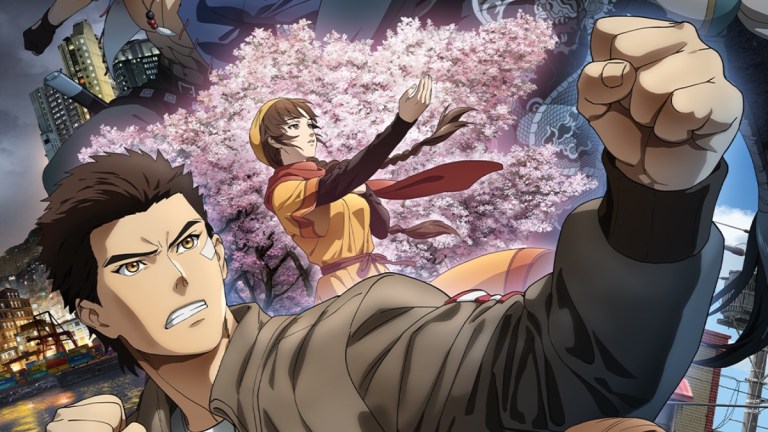Shenmue the Animation Brings A Video Game Sensibility to Television
Shenmue, the anime adaptation of a classic Dreamcast game, understands the storytelling advantages of both games and TV.

This article contains light spoilers for the first three episodes of Shenmue the Animation.
Adapting video games for television is not something that happens very often. Filmmakers prefer to bring their favorites to the movie theater, sometimes with big name actors and budgets. But games that tell sweeping stories and create immersive worlds deserve a more long-form retelling of their plot, for which TV is a perfect medium.
This is why it was such a good idea to turn beloved cult classic Shenmue into an anime. Released on the Sega Dreamcast in the late 1990s with two sequels churned out in the decades following, the game was revolutionary for a myriad of reasons. Not many titles were able to juggle storytelling, action sequences, and graphical enhancements like this one.
Through three episodes, the animated series is able to replicate all three of these elements in fine fashion. The story starts out exactly like the video game’s. The protagonist is Ryo, a martial artist who witnesses his father’s death at the hands of gang leader, Lan Di. The plot quickly pushes forward with Ryo’s attempts to find out information about his father’s killer.
Who is this crime lord? Why did he want his father dead? There are a lot of tropes involved. Destiny, vengeance, and secrets are all well-worn devices that get shown off in Shenmue in the early going. What makes the anime worth your time, whether you have played the games or not, is the way it takes the rich atmospheric density of Japan’s metropolitan area and starts to flesh it out in ways that are similar to the source material, yet carve out their own identity.
For as good as the graphics were on the Dreamcast, the rich artistic style used in the Adult Swim and Crunchyroll co-production is more modern and in line with other modern anime. The color palette is darker, literally and literarily. This leads to a much more engaging style of storytelling. Viewers are concerned for Ryo. They are intrigued at the mysteries that are hiding behind every street corner. Thugs can turn into allies, and main characters start to learn things about each other that they feel they will slowly build to a bigger reveal later on.
There is some great symmetrical character work done in the third episode when Ryo meets Master Chen and his son, Guizhang. The two martial artists instruct Ryo on where he can go next to find out about Lan Di, but there’s something that is creating a wedge between father and son. Guizhang seems to be provoked by Ryo’s quest to avenge his father, desiring a stronger paternal relationship with his own kin. Master Chen refuses to feel the same way, furthering the narrative of father and son relations outside of just Ryo’s perspective on the matter.
Viewers are left to wonder how important these two characters will remain deeper into the show, as Ryo is going to follow the clues about his father to Hong Kong. This is where the first video game ended. With only three episodes comprising the entire title, it probably means there are going to be a lot of artistic liberties taken deeper into the series. The source material will be exhausted so quickly that it practically requires the showrunners to go off the beaten path and forge their own trail.
One of the characters who hasn’t been explored very much is Ryo’s love interest from the games, Nozomi Harasaki. There is a mystery to their relationship, and while Ryo clearly likes Nozomi, his mind is focused on learning about his father. It feels like viewers are on the verge of finding out more about this young woman and how she will factor into the life of the main character the deeper into the show the plot travels.
There are so many possibilities that the television format allows shows like this to explore that movies cannot give the time for. The program is a great character study of an introspective teenager, someone who wants to know more about his past and his family’s. These themes are pretty common in animated series, but to see them translated very well from the Dreamcast to the TV all these years later gives hope for other adaptations of video games to the silver screen.
The show is still going to have a hard time maintaining the same sense of adventure that the game did due to the exploratory elements of the latter. Interaction with objects in the environment, real time clocks, and enormous amounts of NPCs were revolutionary in the late 1990s. The game was a forebear of what was to come from other titles in the open world adventure genre.
What the anime can do is replace some of those features with more advanced voice acting and richer character development. Through three episodes, that is the track it is going down, and viewers should be very optimistic about the future of the video game-to-anime format due to it.
Shenmue the Animation is a co-production between Adult Swim and Crunchyroll and airs new episodes on Sundays.
